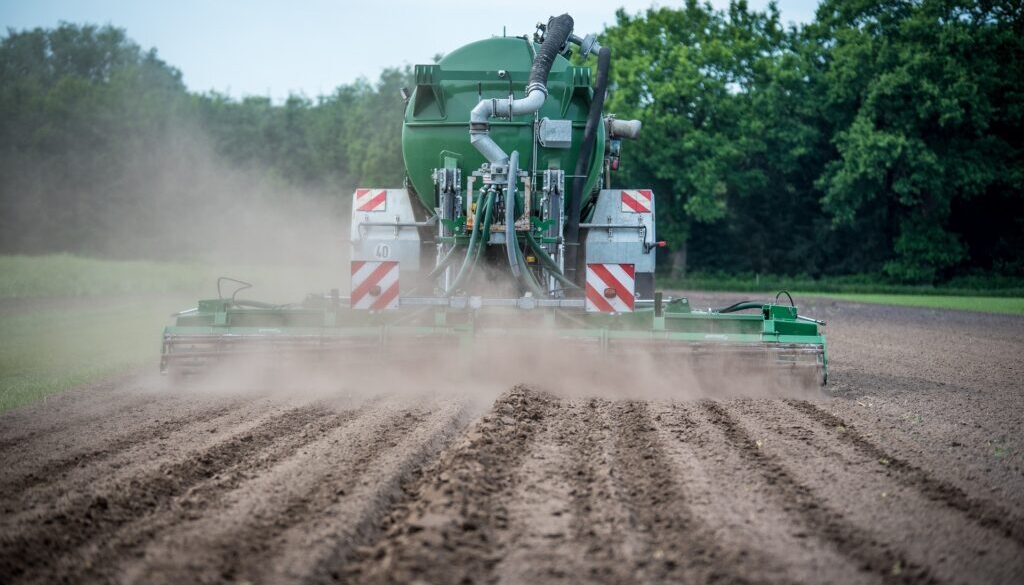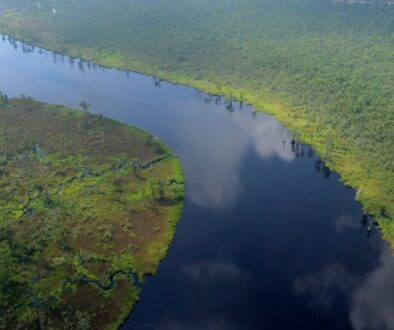Groups seek emergency action from EPA on nitrate pollution in Minnesota
A coalition of environmental groups is petitioning federal regulators to take emergency action to protect residents of southeastern Minnesota from “imminent and substantial endangerment” to their health from the contamination of drinking water sources by a pollutant linked to cancers and other health problems.
Nitrate contamination in the region “is a widespread issue that has stubbornly persisted through decades as state officials continuously fail to effectively address the problem,” the petition states.
The effort echoes pleas from public and environmental health advocates around the country over the harmful impacts of nitrate contamination, which mainly originates in agricultural runoff. Nitrate contamination of drinking water has been linked to “blue baby syndrome,” or methemoglobinemia (a sometimes-fatal condition affecting infants), as well as certain cancers, and thyroid disease, even in studies where contamination was below legal limits.
High levels of nitrate in water can be a result of runoff or leakage from fertilized farm fields, landfills, animal manure, and other sources.
The petition, led by the Minnesota Center for Environmental Advocacy, calls on the US Environmental Protection Agency (EPA) to use its powers under the Safe Drinking Water Act to ensure safe drinking water for Minnesota residents, calling nitrate pollution a “too-long ignored health crisis.” Among other steps, the groups want the EPA to block the development of new large animal feeding operations, which are considered significant contributors to nitrate pollution because of the large amounts of animal manure generated.
“We need help,” said Jeff Broberg, director of the Minnesota Well Owners Organization whose own well water is contaminated with nitrates. “Our drinking water quality keeps getting worse.”
Rural communities at risk
Environmental groups argued in the petition that the geology of southeastern Minnesota — specifically, the presence of a highly-porous type of rock called karst — makes the state especially susceptible to nitrate pollution. Due to the karst bedrock, polluted water from agricultural operations that leaches into the ground is not well-filtered, and contaminated surface water can easily become groundwater pollution, according to the Minnesota Pollution Control Agency.
The EPA established a legal limit for nitrate in drinking water at 10 parts per million in 1962.
In the past two decades, nitrate pollution of drinking water has risen for water systems serving approximately 218,000 Minnesota residents, according to an analysis by the Environmental Working Group (EWG), a research and advocacy organization that is one of the petitioners. An analysis by the Minnesota Pollution Control Agency also shows a statewide trend of increasing nitrate concentrations in drinking water since 2010.
“All these trends show us stepping off a cliff in terms of water quality,” said Broberg. In Winona County, Minnesota, where Broberg lives, cattle outnumber people. “We have way more animal waste in our landscapes than we have from people. It’s a legitimate thing to use manure as a resource as long as you’re not overdoing it. And that’s what we don’t seem to be able to prevent.”
Minnesota enacted a rule in 2019 to insulate public water supplies from nitrate pollution, but the rule doesn’t adequately protect private well owners, said Carly Griffith, the water program director at the Minnesota Center for Environmental Advocacy. Over a million Minnesota residents get their water from private wells, according to the Minnesota Department of Health.
The petition specifically asks the EPA to use its emergency powers to ensure free and safe drinking water alternatives to impacted communities, to prohibit new concentrated animal feeding operations until nitrate levels decrease, and to require public notice of manure land applications, among other actions.
An EPA spokesperson told The New Lede that the agency is “currently reviewing the petition and will evaluate next steps.”
Drinking water “under assault”
The problem of nitrate contamination of drinking water extends well beyond Minnesota, including across the agricultural regions of the Great Plains and Midwest, according to an EWG analysis.
According to drinking water testing from 2017-2019 by EWG, contamination of nitrate in drinking water above the EPA legal limit was found in 15 states, from utilities serving over 64,000 people. The same testing found that 187 million Americans are served contaminated drinking water above EWG’s health guidelines for nitrate. The state with the largest number of residents served by contaminated utilities was California.
“While Big Ag pollutes with impunity, it is rural communities that pay the price. The widespread well contamination threatening public health in Minnesota’s karst region is part of a broader pattern across the country,” said Tarah Heinzen, legal director of Food & Water Watch, an environmental advocacy organization, in a statement.
“Nationwide and in Minnesota, safe drinking water is under assault,” she said.
 EWG
EWG


